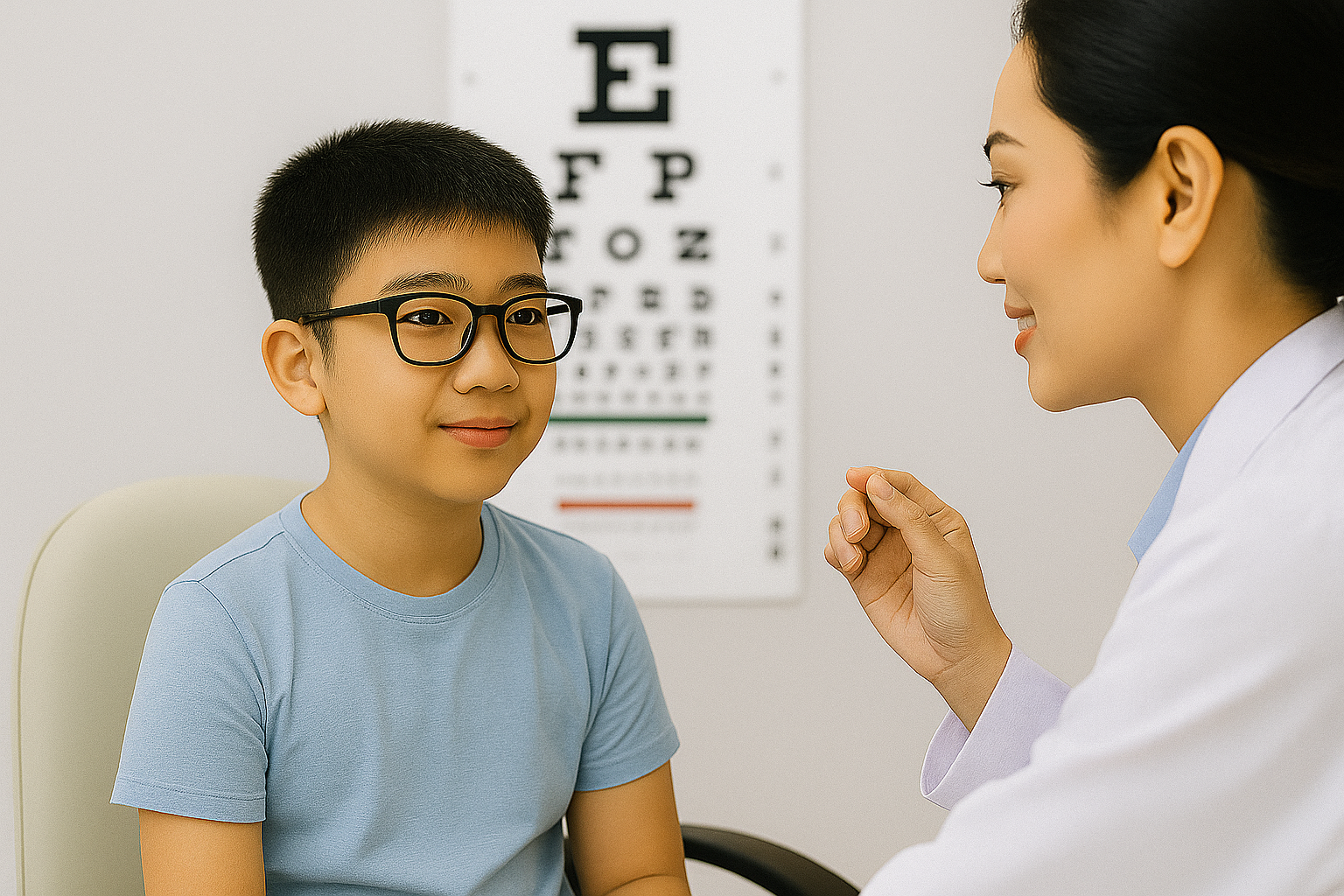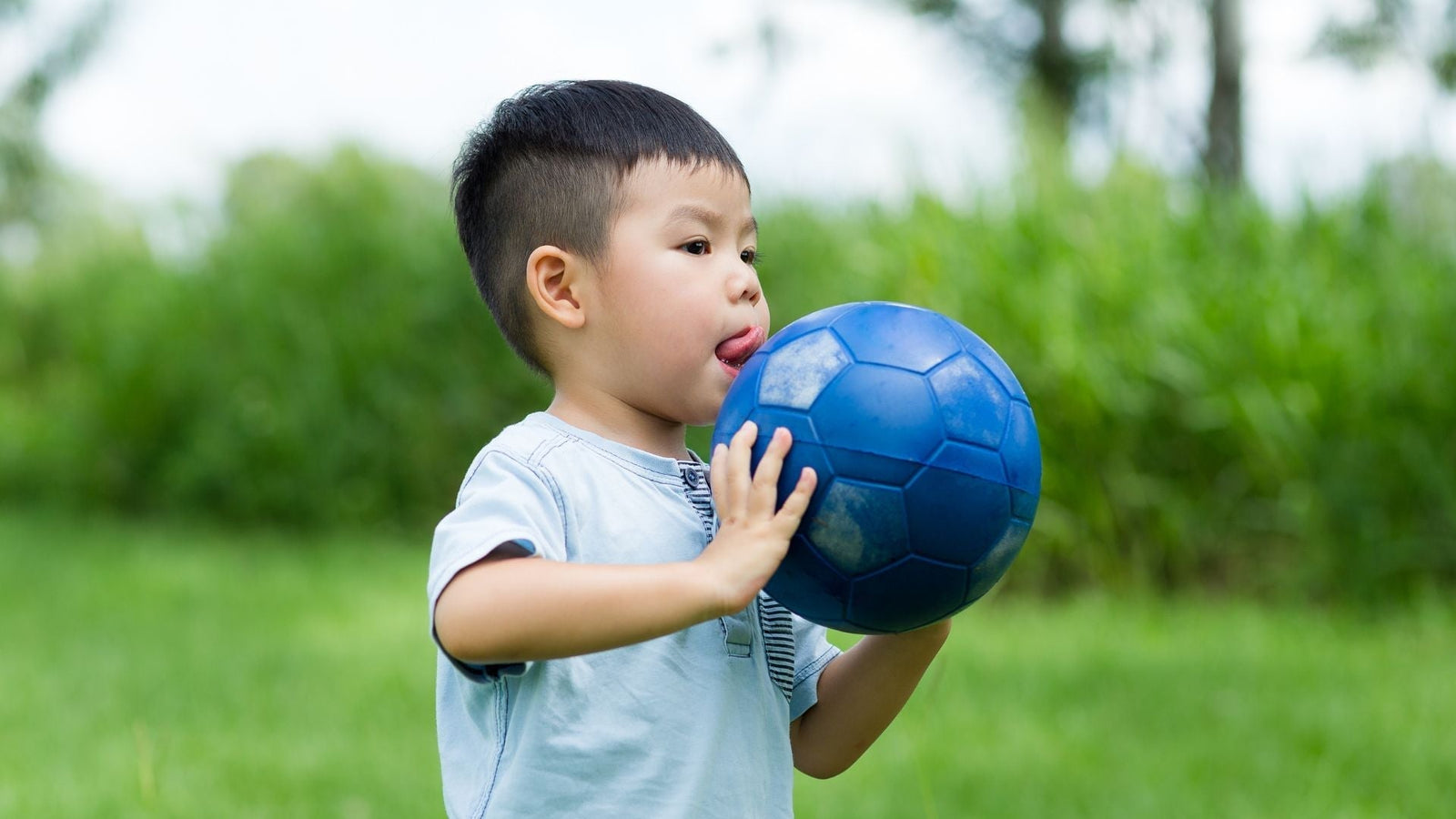Protect your family’s vision today

Myopia, also known as nearsightedness, is a common condition that affects children and adults alike. It can be a source of worry for parents who want to ensure their child can see clearly. Myopia control lenses have emerged as a promising option to slow down myopia progression and safeguard your child's long-term eye health. However, several myths surround these lenses, leading to confusion and missed opportunities for effective myopia management.
Let's debunk some of the most common myths about control lenses.
Worried about your child's nearsightedness? Myopia control lenses might be the answer. Studies have shown that control lenses are most effective when used during rapid eye growth, typically between the ages of 6 and 12 for children. Their development during this period causes the eyeball to elongate rapidly, leading to worsening myopia degree.
Instead of waiting till your child’s myopia worsens, proactively address the issue early on with control lenses, which slows down the elongation of the eyeball. This reduces the risk of future complications associated with high myopia, such as retinal detachment, glaucoma, and myopic maculopathy.
Before purchasing control lenses, it’s advisable to have a comprehensive eye exam. Eyecare professionals can advise on how to prevent myopia from worsening and recommend the most appropriate course of action. They can determine if control lenses are a suitable option for your child and discuss the potential benefits and considerations.
There's a misconception that control lenses limit your child's ability to see clearly at close range, which isn’t the case. Control lenses are designed to provide clear vision at all distances, both near and far. The lenses incorporate special features that help control myopia progression without affecting your child's ability to focus on near objects. Activities like reading and focusing on close work won't hinder the effectiveness of the lenses.

It's important to understand that control lenses aren’t a cure for myopia. While they can significantly reduce the rate at which myopia worsens, they don't completely reverse the condition. Control lenses can be a valuable tool for managing myopia, but they are most effective when used as part of a comprehensive myopia management programme.
Such programmes may also include good eye hygiene practices, like limiting screen time and encouraging outdoor activities to slow down the rate of myopic progression. Your optometrist will suggest some eye care tips that both you and your child can try together.
How does myopia control lenses slow down myopic progression? While regular eyeglasses and myopia control lenses do help the wearer to focus on objects more clearly, regular glasses do little to stop the progression of myopia. On the other hand, myopia control lenses are specifically designed to arrest or slow down the progression of myopia in your child at different stages of the condition.
This result is achieved by incorporating innovative optical designs into the lenses. Myopia control lenses have patterns on their peripheral edges that affect the way light is focused on the retina. The altered focus sends signals that slow the elongation of the eyeball, leading to reduced myopia progression.
Atropine eye drops are another effective option for myopia control in children, and they are often prescribed alongside eyeglasses for children in Singapore. The eye drops serve to inhibit sclera thinning or stretching, and by extension, eye growth, effectively slowing the progression of myopia.
There might be confusion about whether these drops can be used in conjunction with control lenses. The good news is that, in some cases, a combination approach can be even more effective. Studies have shown that combining control lenses and low-dose atropine eye drops is more successful in slowing down myopia progression than either treatment alone.
Eye care professionals can discuss the most suitable approach for your child's individual needs. They can share tips on how to prevent myopia from worsening, while also developing a personalized myopia management programme that may include control lenses, atropine eye drops, or a combination of both.
Looking for ways to prevent myopia progression in your child? If you're concerned about your child's nearsightedness, a consultation with a qualified eye care professional is the first step. Teams of experienced optometrists can assess your child's vision, measure their myopia degree and discuss the various options available, including control lenses, myopia management programmes, and being prescribed ortho-k lenses in Singapore. Schedule an appointment with us today to discuss the best approach for protecting your child's precious vision for the future.
Comments will be approved before showing up.

Late-night homework, endless tuition, and hours of gaming — today’s screen-heavy lifestyle can quietly speed up your child’s myopia. Learn how regular 3-monthly eye reviews, tailored myopia control treatments, and professional guidance can slow progression, protect long-term eye health, and help kids build healthy vision habits for life.

Think your progressive lenses shouldn’t cost more than your phone or laptop? Think again. Premium progressive lenses are precision-engineered tools tailored to your exact vision, lifestyle, and frame — using cutting-edge technology that rivals any modern device. In this article, we break down why these lenses come with a higher price tag, and why they’re worth every cent for daily comfort, clarity, and performance.

Worried your child’s myopia keeps getting worse each year despite wearing glasses? Discover how myopia control lenses like MiYOSMART, Stellest, and ZEISS MyoCare—available in Singapore—can help slow progression and protect long-term vision. Learn how to choose the right option for your child, based on clinical evidence and expert guidance.